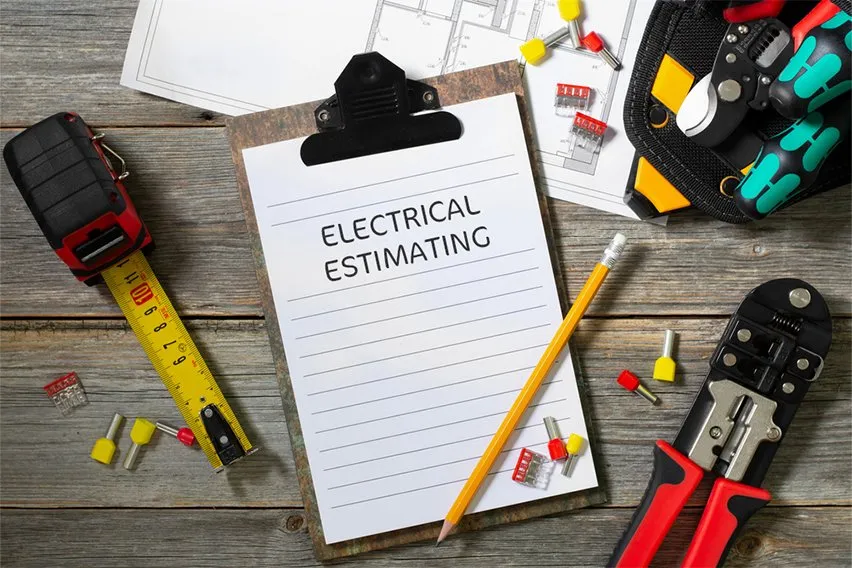Project Estimation (2025): Techniques, Process, & Example

Project estimation is one of the first steps in project management. Project estimation is the process of forecasting, or estimating, the resources, time, and cost of completing a project. Project estimation techniques are used in project management during project initiation, in the planning phase.
A project manager will use expert estimation techniques, taking into account the scope of the project, its deadlines, past projects, and any current project potential problems or roadblocks that may affect the completion timeline.
In this article, we will further explore how to estimate projects and how to create a more accurate estimate in your project plan, with helpful examples of estimation techniques to illustrate the process.
Key Takeaways
- Project estimation is the process of forecasting the resources and time needed to complete a project.
- The key elements needed in an accurate project estimate are time, project scope, and cost.
- Some of the most important project estimation techniques used for an initial estimate are top-down and bottom-up estimation, analogous estimation, parametric estimation, three-point estimation, and what-if analysis.
Table of Contents
- What is Project Estimation?
- Importance of Project Estimating
- Key Elements of Project Estimation
- Estimation Process: How to Estimate a Project
- 6 Project Estimation Techniques
- Manage Project Estimation with FreshBooks
What Is Project Estimation?
Project estimation is the process of determining how much a project will cost a business in time, money, and resources. Project estimation is a critical part of the planning process of any project.
A project manager will use expert project estimation techniques to determine project costs, define resource allocation, and ensure that all people, materials, tools, and resources are available to complete the job on time.

Importance of Project Estimating
Project estimating is an important process, as it helps the company determine how much to charge for its services and plan to complete the job.
Not only does project estimation ensure there are enough resources available to do the work, but it also accomplishes these important things:
Defines The Project Scope
Understanding the work involved will help project managers create a blueprint for how the job should be completed and can stop any uncontrolled expansion of scope from occurring.
Sets A Budget
Having a project cost estimate gives insight into the approximate high-end and low-end costs of completing a job to prevent overspending.
Sets Realistic Expectations
The client will have an overview of the budget and timeline, and where resources will be going as the work is completed.
Assists With Goal Setting
Setting short and long-term goals will keep the job on track as the project progresses and allow the project manager to stay on top of deadlines.
Allows For Resource Allocation
With a project estimate, project managers can ensure materials are available when needed.
Forecasts Financial Returns
Knowing how profitable a project will be for your company is an important metric in deciding whether taking on the project is worthwhile.
Mitigates Risk
Looking into all potential issues beforehand allows project managers to foresee any budgetary issues or delays and create a risk mitigation plan.
Creates Evaluation Metrics
Realistic estimates can give project managers metrics to measure their project performance, providing valuable insights into future projects.
Key Elements of Project Estimation
Three key elements must be considered in any project estimate. These are sometimes called the “project management triangle” or the “3 pillars” of an estimation. These three elements are important for providing realistic expectations and ensuring a project’s overall success.
Cost
One of the key parts of any project estimation process is completing a cost estimation. Your business must have enough money available to cover all the project costs or it will fail.
Providing an estimate for overall costs involves predicting how much the project will cost as well as when you will need the funds.
Looking at similar past projects can help, as well as considering factors like:
- Direct costs like labor and raw materials
- Indirect costs like utility bills or administration fees
- Fixed costs like insurance payments or setup fees
- Variable costs like staff’s hourly wages or fuel costs
- Sunk costs, which are services or items that have already been purchased ahead of time
Scope
A project scope is clearly written documentation that communicates the boundaries of a project.
Determining a project’s scope will help you deliver an accurate estimate to the client while avoiding ambiguity, scope creep, and future conflicts. It also helps keep your team focused and gives guidelines for what to do if the client makes change requests mid-project.
Looking at your company’s past successful projects can help guide in establishing your project scope. Some of the factors for project managers to consider when planning scope are:
- Project objectives
- Project deliverables
- Resources available
- Requirements
- Assumptions
- Project constraints
- Exclusions
- Risks and contingencies
- Metrics that determine project success
Time
Creating a realistic project schedule can be challenging, but it is an important aspect of project management.
Accurately forecasting the project completion date and the number of worker hours needed can help with budgeting while giving the client realistic expectations for the timeline.
Determining how long individual tasks may take can also help keep the job on schedule and help you better allocate resources.
The steps to creating a realistic project timeline are as follows:
- Review the scope of the current project, including deadlines, tasks involved, and budgetary constraints.
- List all tasks, big and small, needed to complete the job. Dividing larger projects into smaller, achievable goals will help your team stay on schedule.
- Determine how long each task will take. You may utilize project management software, look at past project data, or simply ask the person assigned to the job how long they will need for your estimate.
- Consider the time revisions and how long testing may take and incorporate this time into the estimate.
- Add contingency hours to the estimate. Sometimes, adding a few extra days can make all the difference in the success of a project.
- Add all of the time together, then review your findings and revise as needed. You may want to offer both high and low estimates to your client, for a realistic look at the best-case scenario, as well as your contingency planning
In addition to the first three elements: cost, scope, and time, there are several other important factors that project managers should consider:
Risk
Determining the risk elements of a project is an essential part of project estimation, as, with appropriate planning, you can mitigate possible issues, or use them as opportunities for growth as a project manager.
Project risk estimates can help create a risk management plan to put you in the best possible position to act quickly if an error, problem, or unexpected situation arises.
Resources
It is always important to understand the resources necessary to complete the job. This may include physical materials, subcontractors, supplies, machinery, tools, or anything else your organization will need to be able to do the work.
A shortage of resources can have a significant impact on your project, for example if you’re understaffed, you need to wait on equipment, or you run out of important materials, your timeline may stall, potentially causing issues with the rest of the project.
Quality
Along with finishing by the deadline and staying within budget, you must be able to deliver quality work—if the client isn’t happy with the final results, then the project has failed. Depending on the project and where you’re located, you may also have to meet specific regulations, codes, laws, or rules.
To ensure quality standards are met, you must define the parameters and get client input on what their expectations are before the project begins.
Estimation Process: How To Estimate a Project
The estimation process involves the analysis of various project elements, including the labor, materials, timeline, equipment needed, and the scope of the job itself. If you’re looking for the steps for how to estimate a project, the process is as follows:
- Choose the estimation technique that best suits the project. These include top-down or bottom-up estimating, what-if analysis, 3-point estimation, analogous estimating, and parametric estimating. We will go into more detail about these techniques below.
- Speak to project stakeholders and learn all you can about the way things are done and why the current systems are in place. Make sure you understand your team’s strengths, skill sets, and job responsibilities for a better overall grasp of the job at hand.
- Study trends and go over previous project numbers, using historical data to create a more accurate estimate based on past outcomes.
- Understand the 3 pillars of any estimate: time, cost, and scope to learn what the client’s expectations are and determine realistic metrics for a successful project. Look into the resource management and determine any risks you may need to mitigate.
- Break down the project into small, attainable goals, tasks, and phases, assigning a timeline to each piece.
- Communicate clearly with your client, to ensure everybody is in agreement as to what constitutes successful completion.
Now that you have a comprehensive understanding of the estimation process, it’s time to create accurate estimates. FreshBooks has easy-to-use estimating software that allows you to set clear expectations and provide accurate project estimates every time. FreshBooks also offers a free, professionally designed estimating template you can use now to create a simple, printable estimate at no cost.
6 Project Estimation Techniques
The following are 6 of the most popular project estimation techniques. A project estimation technique is a specific tactic used to make a clear plan for the project’s scope, cost, and time. Using estimation techniques helps you to better understand the project while allowing you to forecast the key project elements outlined above.
1. Top-Down Estimation
A top-down estimate starts by defining a specific time frame for a project and then breaking the job down into phases, which are then broken down into tasks to fit that timeline.
For example, if a client were to request a building to be built within a year, you would break the year up into various key milestone stages, such as planning, laying a foundation, framing, installing electrical, plumbing, etc.
Each of those phases will then be broken down into individual tasks like pouring concrete, wiring light fixtures, installing bathroom facilities, etc.
The top-down estimating technique is commonly seen in construction projects and software development, using the final deliverable goal as the starting point.
2. Bottom-Up Estimation
With a bottom-up estimation technique, project managers estimate each small project task that needs to be completed, then they add those tasks up into an overall project forecast.
This technique provides accurate estimates with fewer chances of error, as it takes a detailed look at the most granular aspects of a job. It is generally used for smaller projects or projects in which most project planning information is already known.
For example, if a small design company is providing an estimate for a T-shirt design, they will take into account the time it takes to brainstorm ideas, design, review, and edit the final project, taking into account costs like designer rates and software fees. Because it’s a small project team with a fairly simple deliverable, this approach makes the most sense.
3. Analogous Estimation
When a project manager takes the analogous approach to estimating projects, they will look at the past project data of similar projects to come up with an estimate of the time, cost, and resources needed to complete the job.
For example, if a software developer previously created an app that took 2 years and cost $100,000, looking at the historical data, the company could accurately estimate that a project with a similar scope might also take about 2 years to complete, at around the same project cost.
4. Parametric Estimation
A parametric project estimation uses data from similar projects, adjusting the data to reflect the differences between the two. This example uses previous project aspects to estimate either the scope, cost, or time frame of the current job.
For example, if a woodworker spent 15 hours constructing a particular style of ornate box, they may use parametric estimation techniques to determine that building 10 similar boxes might take 150 hours. If 2 workers were on the job, it might take each of them 75 hours to complete the boxes.
5. 3-Point Estimation
3-point estimating is a commonly used technique to develop a best-case scenario, a worst-case scenario, and the most likely outcome. Averaging the 3 will give you the final estimated project cost, timeline, and scope.
A simple example of this technique is if, after a careful look at the job’s parameters, a company optimistically thought they could complete the project within 10 days, with a pessimistic estimate of 15 days, and a realistic estimate of 12 days.
Using the 3-point estimation technique, this means the job will likely take 12.3 days to complete.
6. What-If Analysis
A what-if analysis is one of the best project estimation methods used when the job has unknown variables. It examines all possible constraints of the entire project, exploring plan and schedule alternatives in case of changing conditions.
This is one of the best project estimate techniques for risk management because it helps optimize the plan while predicting consequences and troubleshooting ahead of time.
For example, a manufacturer may want to consider what will happen if a base-materials delivery is late, or what will happen if the project timeline can’t be met.

Manage Project Estimation with FreshBooks
Accurate project estimation is key to keeping a project on track, staying within budget, and managing client expectations. Using a cloud-based, convenient program like FreshBooks’ project management software can help you calculate the figures you need to predict the scope, budget, and timeline of any project, communicate with clients, and create professional-looking estimates, with customizable templates that can be modified to suit your brand.
Freshbooks makes it easy to turn estimates into invoices, add discounts, instantly view and respond to client feedback, and track your estimate status. Clients can also accept estimates online, so you can get the work started quicker. Try FreshBooks free and see how this powerful software can take the stress out of project management.
Reviewed by
Sandra Habiger is a Chartered Professional Accountant with a Bachelor’s Degree in Business Administration from the University of Washington. Sandra’s areas of focus include advising real estate agents, brokers, and investors. She supports small businesses in growing to their first six figures and beyond. Alongside her accounting practice, Sandra is a Money and Life Coach for women in business.
RELATED ARTICLES



 10 Best Proposal Software for 2025
10 Best Proposal Software for 2025 Estimating Commercial Renovation Cost Per Square Foot
Estimating Commercial Renovation Cost Per Square Foot 3 Best Earthwork Estimating Software
3 Best Earthwork Estimating Software How to Become a Construction Estimator? Step-By-Step Guide
How to Become a Construction Estimator? Step-By-Step Guide 6 Best Electrical Estimating Software in 2025
6 Best Electrical Estimating Software in 2025 Why Is Estimation Important in Construction?
Why Is Estimation Important in Construction?